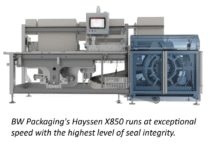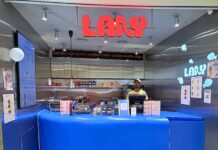
Aquapak’s Hydropol and TIPA’s biopolymers offer a broad range of applications where there are some workable alternatives. This is giving the industry unique and valid organic recycling solutions.
The collaboration between Aquapak Polymers and Tipa sees the making of a new solution for material packaging to support the circular economy. These two top companies for sustainable materials have joined forces to deliver an array of search-led materials, where there are currently zero workable alternatives. The upcoming solution will include a PVDC-free and high-barrier compostable film to support packaging.
These companies together can respond well to the rising market need for workable solutions for the circular economy, especially in packaging and several other FMCG markets.
A circular economy focuses on materials and products being used in a constant loop rather than being discarded.
In a circular economy, products are put to reuse. All the products that cannot be reused are put for recycling by mechanical or chemical processes or through biological processes like composting. The circular packaging solutions include the circular economy’s principles and seamlessly integrate into the sustainability efforts.
Aquapak and Tipa with their best materials
Aquapak’s Hydropol is a water-soluble and high-performance Polyvinyl alcohol-based polymer. It possesses a unique synergy with bio-based polymers. Strength and barrier functionality is what it offers besides retaining different end-of-life options through biodegradability or recycling streams into the environment.
Tipa has made an array of high-end laminates and compostable films. Tipa will focus on compostable polymers in collaboration with Hydropol to bring PVDC-free and high-barrier compostable technology into the market. Additionally, these two companies have been working on future development, increasing paper-based packaging. This is going to be recyclable organically.
Tipa’s compostable polymers and Hydropol being a co-extruded film as coatings on the paper will allow cost-efficient designs fitting the circular economy while targeting both end-of-life and primary performance.
Top-quality material solutions are being used for developing products. However, according to the chief executive officer and co-founder of Tipa, Daphna Nissenbaum, there is a need to drive innovation inside the industry.
The purpose behind the collaboration
The collaboration will create an array of compostable solutions and open doors for combining their skills, amplifying the voices that support organic recycling solutions, and then introducing better viable alternatives for the customers.
The present need for the combinations of complex materials indicates that there is zero silver bullet for the material sector addressing the requirement for functionality when it comes to packaging. Besides, it creates end-of-life options to design circulation packaging solutions.
The collaboration of Aquapak with Tipa combines the abilities of both businesses for developing these latest combinations of materials at a scale, enabling the packaging design that possesses both environmental responsibility and functional performance, thus, increasing the choice of the environmental advantages for the customers without compromising the functionality.
IndiFoodBev — authentic, impactful and influential
An English-language food and beverage processing and packaging industry B2B platform in print and web, IndiFoodBev is in its third year of publication. It is said that the Indian food and beverage industries represent approximately US$ 900 billion in revenues which implies more than 20% of the country’s GDP. Eliminating the wastage on the farmside can help to deliver more protein to a higher number of the population apart from generating sizable exports. The savings in soil, seeds, water, fertilizer, energy and ultimately food and nutrition could be the most immense contribution that country is poised to make to the moderation of climate change.
To improve your marketing and grow sales to the food and beverage processing and packaging industry, talk to us. Our research and consulting company IppStar [www.ippstar.org] can assess your potential and addressable markets in light of the competition. We can discuss marketing, communication, and sales strategies for market entry and growth.
Suppliers and service providers with a strategy and budget for targeted marketing can discuss using our hybrid print, web, video, and social media channels to create brand recognition linked to market relevance. Our technical writers are ready to meet you and your customers for content.
The second largest producer of fruit and vegetables in the world is continuously expanding processing capacities and delivery systems with appropriate innovative technologies. We cover product and consumer trends, nutrition, processing, research, equipment and packaging from farm to thali. Get our 2025 media kit and recalibrate your role in this dynamic market. Enhance your visibility and relevance to existing markets and turn potential customers into conversations. Ask for a sample copy of our bi-monthly in print or our weekly IndiFoodBev eZine each Wednesday.
For editorial info@ippgroup.in — for advertisement ads1@ippgroup.in and for subscriptions subscription@ippgroup.in
Naresh Khanna – 10 February 2025
Subscribe Now











